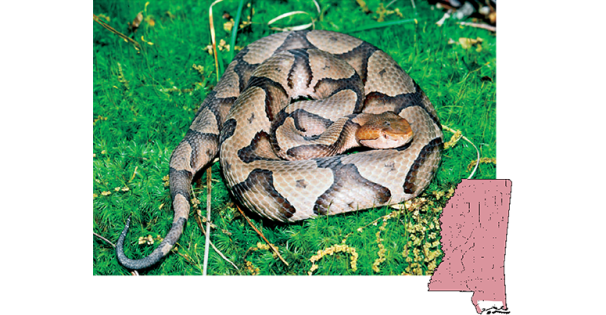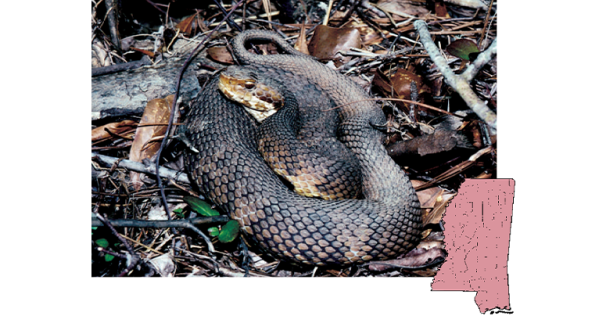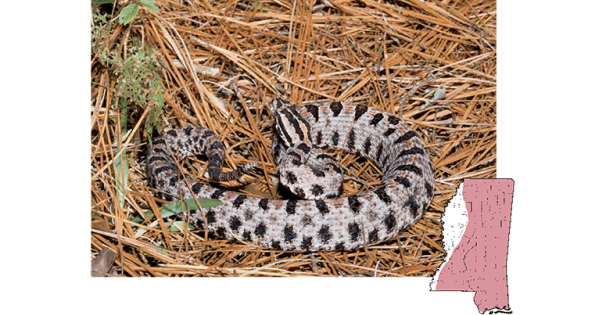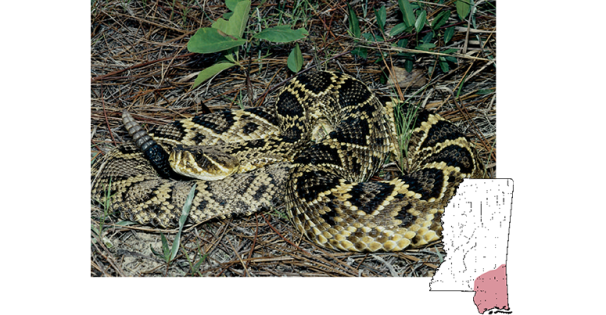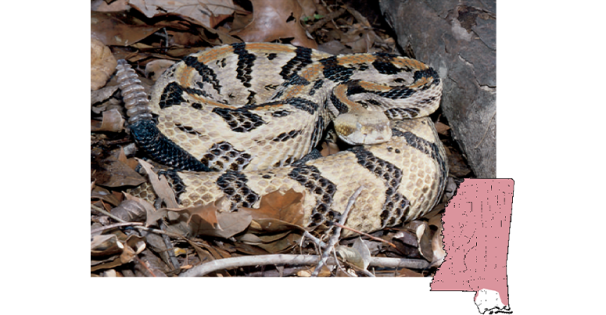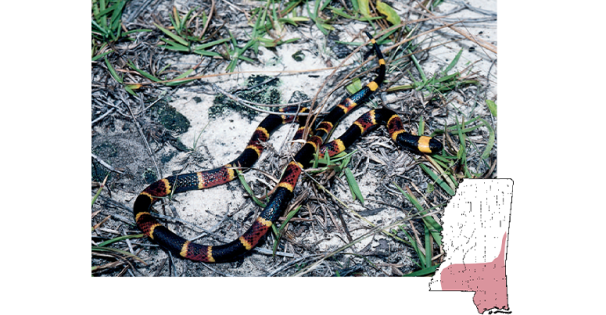
Snakes are an essential part of Mississippi’s ecosystem. They help control rodent populations and play an important role in maintaining ecological balance. Most species are nonvenomous, and nearly all snakes will avoid human contact if left undisturbed.
Quick facts about Mississippi Snakes:
- 55 snake species in Mississippi
- Only 6 species in Mississippi are venomous
- Most snakes are non-aggressive and secretive
- The majority of bites occur when people attempt to capture or kill a snake
- Facial Pits: Located between and slightly below the eye and nostril on each side of the head. These indentations are heat-sensitive scanners that detect changes in temperature, serving as an aid to the snake in hunting its food and identifying large warm-blooded predators. Snakes with these organs are collectively called pit vipers.
- Vertically Elliptical Pupils: Rattlesnakes, cottonmouths, and copperheads have slit-like pupils (cat-eyes). Native nonvenomous snakes have pupils which are round. However, pupil shape can be unreliable—snake pupils dilate in low light and may appear round. This characteristic should not be used on its own for identification.
- Single Scale Rows Underneath Tail: If the scales crossing the underside of the tail are made up of single rows (just like the regular belly scales), the snake is venomous. Native Mississippi nonvenomous snakes have a double row under the tail.
- Rattle on Tail: Three of our six venomous snakes are rattlesnakes. The rattle consists of dry, interlocking segments which click together to create a sizzling sound. Babies have a single button and new segments are added with each shedding of the skin. Pygmy rattlers have only a small rattle which produces a sound no louder than a buzzing insect.
- RED-Yellow-Black Rings: No pits, rattles, or “cat-eyes”—the coral snake breaks the rules. Brightly banded with red, yellow, and black, the warning colors are side by side (“red touches yellow, kill a fellow”). In the similarly colored and totally harmless “false coral snakes” the red and yellow rings are separated by black (“red touches black, friend of Jack”).
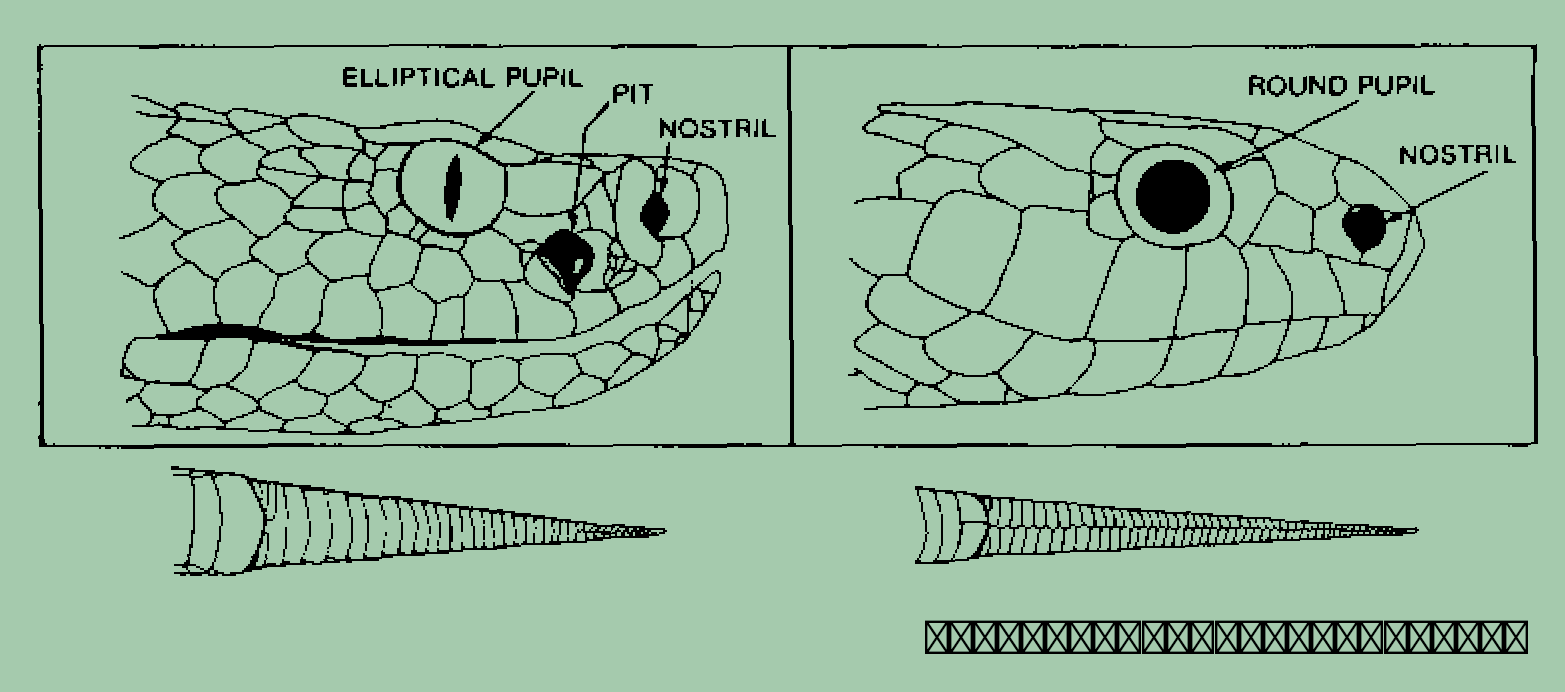
Emergency Treatment
Do
- Calm and reassure the victim; don’t panic.
- Remove all rings, bracelets, or other constricting items.
- Immobilize the bitten area as much as circumstances allow.
- Keep the bitten area at or slightly below heart level.
- Wash the area thoroughly.
- Take the victim to a medical facility as quickly as possible.
- Be prepared to treat for shock.
- Be prepared to initiate cardiopulmonary resuscitation (CPR) if required.
Don’t
- Do not give the victim any drink or food by mouth.
- Do not place ice on the bitten extremity.
- Do not make any cuts in or around the bite area.
- Do not administer any drugs to the patient.
- Do not apply a tourniquet to the affected extremity.
- Do not attempt to remove venom by mouth suction over the wound.
- Do not treat snakebites with electrical shock.
To Reduce the Risk of Being Bitten
- When you are in areas where there may be snakes, wear long pants and/or shoes that protect your ankles.
- Always look carefully where you are walking or placing your hands.
- Always use a flashlight for activities after dark such as gathering firewood.
- Choose a campsite that is away from woodpiles, cave entrances, swampy areas, or thick underbrush.
- Use care when moving boats left on shore for several hours.
- If you see a snake carefully step away from it. Never attempt to capture or kill snakes.
- Treat “dead” snakes as you would live snakes.
- If you are attempting to identify a snake, make sure you are not within its striking distance, which is usually 2/3 of the snake’s body length.
- Bring a companion when traveling in areas where there may be snakes.
- Remember that venomous snakes can climb trees, can bite underwater, and may enter saltwater.
Suggestions for Avoiding Snakebites
Don’t Kill Snakes:
Snakes are important predators on injurious rodents and insects. The vast majority are nonvenomous and completely harmless to people. Nearly all snakebites take place while people are killing the snake or otherwise tormenting, capturing, skinning, or handling them.
Watch Where You Walk, Sit or Place Your Hands:
Snakes like to hide in stumpholes, under boards and sheet metal, in brush piles, and next to fallen logs. If you encounter one, simply back away from the snake.
Leave DEAD Snakes Alone:
Recently killed snakes can bite reflexively. Never try to examine the mouth for the presence of fangs to determine if the snake is venomous. The fangs are enclosed within gum tissue and may be difficult to locate.
Keep Your Property Clean:
One can never completely rid a given area of snakes. To reduce the number of snakes around your property, keep areas free of trash, brush
and log piles. Mow the grass near your home frequently. Rats and mice make up the diet of most snakes and they are attracted to unkempt areas. As a result, snakes follow in search of both food and shelter.
Snake Repellents Do Not Work:
Substances such as pesticides, kerosene, diesel oil, sulfur and mothballs, as well as commercially available “repellents” are ineffective and extremely dangerous to spread around your home.
Remember:
- More than 85% of all snakebites are by nonvenomous species.
- Of all bites by venomous snakes, 25-50% do not inject any venom.
- More importantly, mortality is less than 1% for physician-treated venomous snakebites in the United States.
